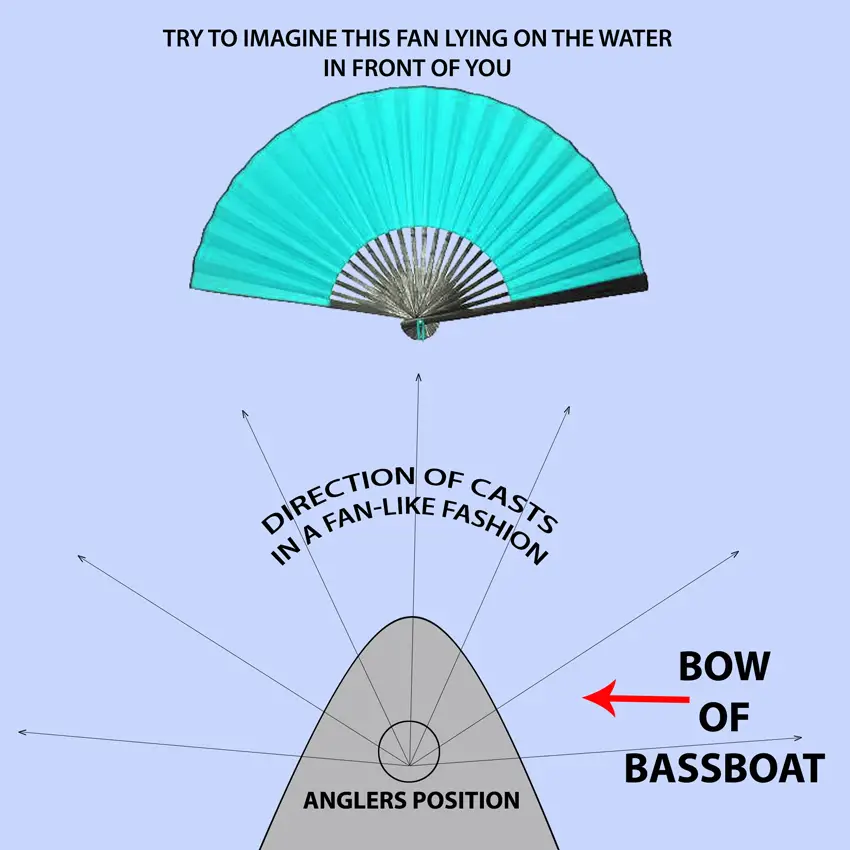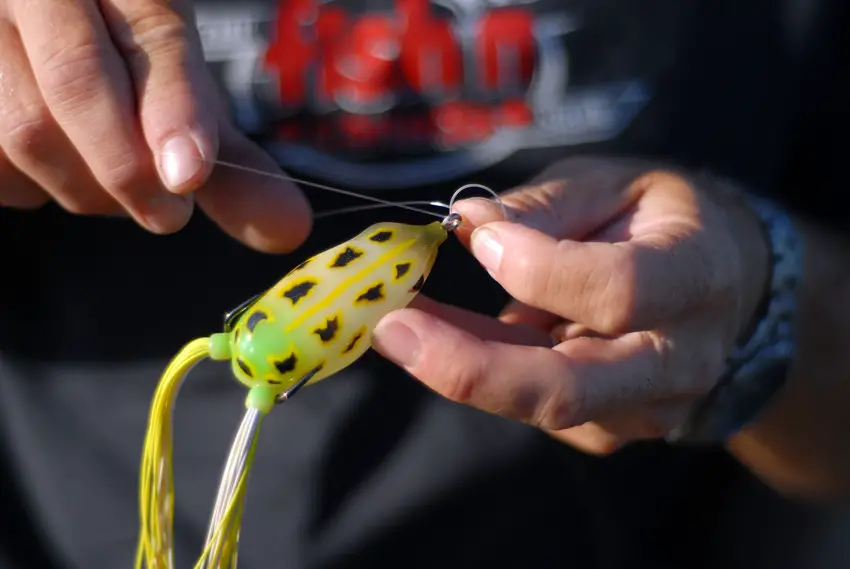Shore Fishing Tips: Believe it or not, fishing from shore is hugely popular worldwide. Let’s face it, we anglers will do whatever it takes to get out there. If it is shore-only access, we’ll take it. Fishing is in our blood.
Some anglers that use boats (bass anglers in particular) bring forth a sense of irony. They (we) launch our rigs, and the first place we normally go is… to the shoreline! The exact areas that shore anglers are utilizing!
Let’s be honest: If we have a boat, we’re gonna use a boat. Take away our boats, however, and we will adapt to the shoreline. Those that do not have boats are the anglers that are already used to firing out from the bank in hopes of connecting with a shallow water swimmer.
The following are five techniques, baits or general shore fishing tips that we highly recommend.
(Also, for those in our neck of the woods, don’t forget to check out our earlier article about our Top Five Shore Fishing Spots in Southern Ontario.)
Learn to Fan Cast (1 of 5)
Fan casting is a technique that I’m sure bass anglers came up with in an extremely natural way. The need was to cover as much water as possible from a set position. In a bass boat, once you are relatively stationary, you need to work the area completely in about a 160-degree span (with the center point being the bow of the boat).
Shore anglers can do exactly the same as the bass pros do. This allows you to work that wide span of water in front of you and cover different depths (the casts out to the sides work shallower water than the one straight away from you).
The following diagrams should help explain.
This is how a typical bass angler works an area with a bait. The goal is to cover as much water as possible in the shortest amount of time.



Learn to fan cast and you will catch more fish from shore.
Top, Middle, Bottom (2 of 5)
Since shore anglers don’t always have the luxury of carrying a boatload of tackle—they need to pare it down to a minimum. Depending on the target species, you can pretty much break things down into water column sections. Here are some shore fishing tips for each section of the water column.
On Top
Bass, pike, trout and panfish are the most common fish species to feed on the water’s surface. Species-specific surface lures should always be tried from shore during the early morning and late evening. And why not? It’s fun and effective. Poppers, walkers, propellers, and dry flies will all work.

Fish like walleye feed closer to the surface during dark or low-light conditions. Fish like catfish rarely fit into this category.
Through The Middle
The mid-section of a fishing area is probably the easiest to cover. Fish roam around in this zone a lot more than you might think. Since Ang and I have been using Garmin’s LiveScope, we see it firsthand.

Lures like suspending minnowbaits, medium-diving crankbaits, spinnerbaits, chatterbaits, inline spinners, spoons, etc. are all amazingly effehttps://fishncanada.com/tools-of-the-trade-crankbaits/ctive at covering the mid-section of the water you are fishing.
A float, suspending or even sinking jerkbait is an awesome shore fishing lure.
With all these baits, make sure you vary the retrieve if the fish aren’t biting (if they are, stick with whatever you’re doing, of course). Try faster or slower; try twitching or pausing. Get that fish’s attention by catching it off guard.
Hitting The Bottom
This is the area of the water column where most anglers feel all the fish are. At times that is very much correct—but not always.
When fish are feeding on the bottom, lures like jigs (all types), plastics, live bait, deep-diving crankbaits, etc. are all extremely effective. Walleye and smallmouth bass are fantastic examples of fish that, at times, want their meals directly on the bottom of the waterbody that an angler is fishing.

A great instance is jig fishing with artificial plastics for walleye. So many times in my Walleye fishing, it has been evident that the fish wanted nothing to do with a bait above the bottom; they wanted to pick it up off the bottom. For instance, that jig is effective up off the bottom for attracting the fish, but the only way they wanted to eat it was after bottom contact was made.
All three of these sections of the water column are easy to cover from shore.
Cover Water (3 of 5)
This point pretty much goes hand-in-hand with the fan-casting and the top/middle/bottom sections above. When you get the chance to fish from a boat, how often do you stay in the exact same spot? Probably a lot less than moving and grooving, looking for that hotspot. Once you find something that looks good or is producing fish, you go into lockdown and work things as hard as necessary.
Well, the same goes for shore anglers. Why would you stand in one spot for hours on end unless you’re catching fish? Depending on the land you are fishing from, fan cast from a particular spot, work all levels of the water column and then move 20ish feet in either direction and similarly work the new area.
Even if you’re at a cottage, once you finish fishing from the dock, walk down the shoreline and hit new water. If the neighbours love you, they’ll certainly let you access the water from their property as well.

Slip Float vs. Bobber (4 of 5)
One of the significant advantages of shore fishing is being able to not only bring the kids out on a day trip but to have them participate in the activity of fishing.
One of the most exciting ways to catch these fish is with the good ol’ red and white bobber. The problem, though, is that dad must keep casting and re-casting each kid’s rigs out because of the awkwardness. If there is a necessary (depending on conditions) three feet of line between the bobber and the bait, kids will have a tough time handling that kind of setup.
Enter the slip float.

A slip float does the same thing as the original red and white bobber, but in many instances, it does it more efficiently and effectively.
The obvious difference in these two float setups is the absence of line between the float and bait with the slip float rigging. With the float being directly against the bait (jig and live bait, jig and plastic, etc.), even a kid with limited casting experience can quickly learn how to fire out this rig.
For the more experienced, a slip float is an excellent tool to fish various depths (by simply changing the bobber stop location on the line). One can effectively fish one to two feet of water, all the way down to ten feet of water (and deeper, if need be).

If you fish from shore and you like using bobbers, get yourself some slip floats—they’re awesome!
Waders in the Cold, Shorts and Sandals in the Warm (5 of 5)
Just because you are fishing from shore does not mean you cannot cheat a bit. To get some extra distance on your cast and reach that “unreachable” hotspot from shore, why not don the waders or walk in thigh-deep? Quite often, there is an inside edge of a weedline running parallel to the shore. Let me tell you, an inside weed edge can be magical when it comes to holding fish. But often they curve or turn away from shore making them too far to cover. This is where wading comes in. You may not be able to reach all of these spots, but even one could be a game-changer.

The bonus is—like some of Canada’s 2020 fishing summer so far—if the air temperatures are hitting the mid- to high-30s Celsius, why not have a bit of a cool-down?
In Closing
Hopefully, you found these shore fishing tips helpful. I would love to hear fishing stories from anyone who has tried some of these tips and techniques. Please leave me a comment below and send a pic or two to our Fish’n Canada Fan Page.





